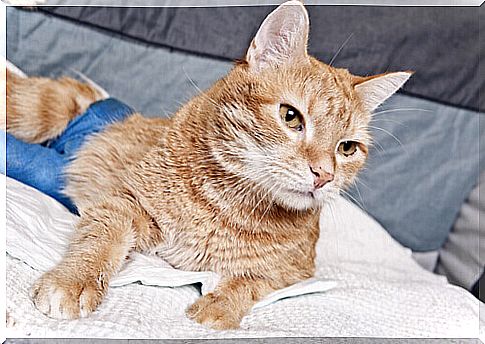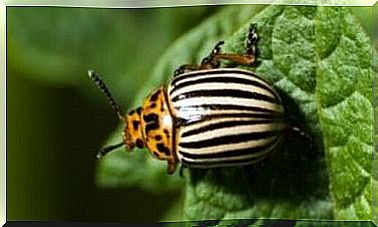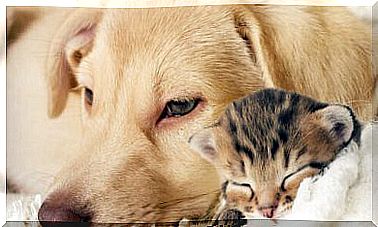Cat Mushrooms

In the environment there are many varieties of fungi that can be found both on the ground and in organic matter. They are heat resistant, live for long periods and can come into contact with your cat’s body through the airways or some wound in the skin.
Diseases caused by fungi can be divided into two categories: those that affect only the skin, such as ringworm or thrush, and systemic diseases, that is, those that can reach the liver, lungs, brain and other organs interior. In this article we want to share with you everything there is to know about cat fungi.
What diseases can fungi cause in cats

Systemic diseases caused by fungi, in general, affect those cats that already have some chronic disease or those who are undernourished. Most of these diseases are not easily recognized and are difficult to treat. To diagnose them, as appropriate, x-rays, biopsies, cultures and blood tests are used. They normally affect cats, except for sporotrichosis which can also affect humans.
Another of these diseases is cryptococcosis, caused by a yeast-like fungus called Cryptococcus neoformans. It is a recurrent disease in cats, whether they are young or adult. It contracts by inhaling the spores found on the ground, in areas highly contaminated by bird droppings, especially pigeons. If the cat has an immunological deficiency, the risk of infection is greater.
Symptoms of nasal cryptococcosis include sneezing, coughing, breathing problems, and the presence of mucous membrane with blood in one or both of the nasal passages. This infection can extend to the brain and cause meningitis and eye damage, including blindness.
There is also a type of cutaneous cryptococcosis, the symptoms of which are swellings on the nose, muzzle and neck. Neurological cryptococcosis, on the other hand, can present a very varied symptomatology, depending on the area affected by the infection. Such symptoms can include blindness, seizures, lack of coordination or a slight tilt of the head. Diagnosis can be made through a tissue biopsy.
Other feline diseases caused by fungi

Histoplasmosis is a disease caused by a fungus called Histoplasma capsulatum and is very common in the central area of the United States, in the regions of the Great Lakes, in the Appalachians, in Texas, in the Mississippi Valley and in Ohio: in these areas, the high presence of nitrogen in the subsoil favors the growth of this fungus.
In most cats, histoplasmosis causes fever, loss of appetite, weakness, weight loss, and lameness. The eyes, liver, respiratory system, and skin can also be affected. An effective treatment is based on antifungals, such as itraconazole. Despite this, many cats die from this infection, except those who are diagnosed with a mild respiratory problem.
On the other hand, sporotrichosis can also harm your cat’s health. This is an uncommon skin infection caused by the spores of a fungus of the Sporothrix schenkii type found in the soil. These spores usually infect the cat through skin wounds, or by ingestion or inhalation. The disease affects male cats more frequently, which usually roam in very large and extensive grounds, such as grasslands. It is widespread mainly in the north and central United States, in valleys, rivers and on the coasts.
Cats affected by this infection have skin wounds, such as lumps and ulcerations, in the paws, muzzle or tail. The hair around the lump falls off and leaves a moist, ulcerated area uncovered.
Once the infection is diagnosed, the cat will be able to receive treatment, with ketoconazole or with itraconazole, for a period that can last from 1 to 2 months.
Finally, another disease caused by fungi is dermatophytosis, better known as ringworm. This fungus usually affects the cat’s skin, nails and coat. It is highly contagious and can also affect humans. It generally affects kittens less than one year old. Symptoms include small, hairless patches forming in the cat’s skin, which has a peeled and slightly inflamed appearance.
Among the treatments used to curb the advancement of ringworm, we find some based on itraconazole, terbinafine and lufenuron.









